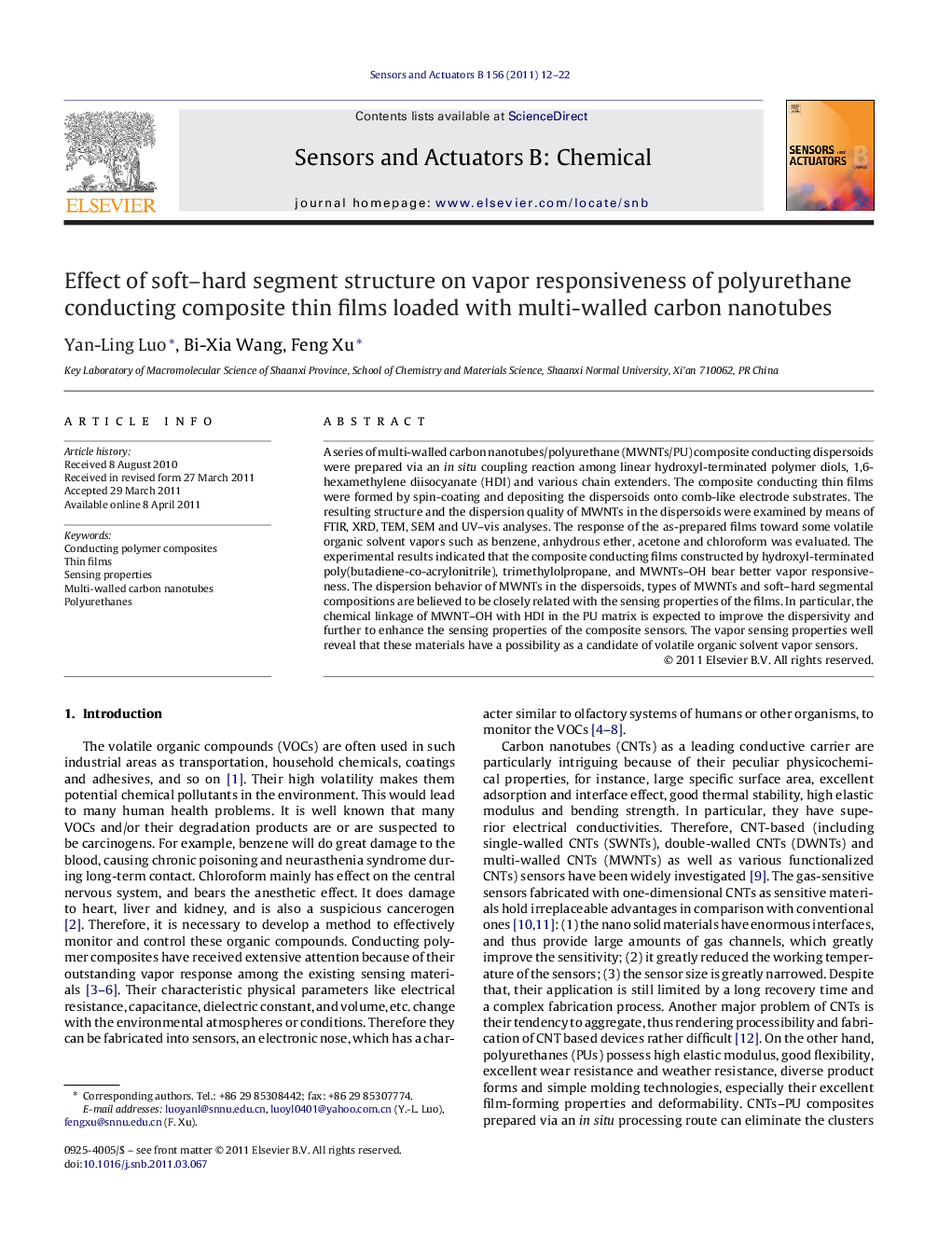| Article ID | Journal | Published Year | Pages | File Type |
|---|---|---|---|---|
| 740796 | Sensors and Actuators B: Chemical | 2011 | 11 Pages |
A series of multi-walled carbon nanotubes/polyurethane (MWNTs/PU) composite conducting dispersoids were prepared via an in situ coupling reaction among linear hydroxyl-terminated polymer diols, 1,6-hexamethylene diisocyanate (HDI) and various chain extenders. The composite conducting thin films were formed by spin-coating and depositing the dispersoids onto comb-like electrode substrates. The resulting structure and the dispersion quality of MWNTs in the dispersoids were examined by means of FTIR, XRD, TEM, SEM and UV–vis analyses. The response of the as-prepared films toward some volatile organic solvent vapors such as benzene, anhydrous ether, acetone and chloroform was evaluated. The experimental results indicated that the composite conducting films constructed by hydroxyl-terminated poly(butadiene-co-acrylonitrile), trimethylolpropane, and MWNTs–OH bear better vapor responsiveness. The dispersion behavior of MWNTs in the dispersoids, types of MWNTs and soft–hard segmental compositions are believed to be closely related with the sensing properties of the films. In particular, the chemical linkage of MWNT–OH with HDI in the PU matrix is expected to improve the dispersivity and further to enhance the sensing properties of the composite sensors. The vapor sensing properties well reveal that these materials have a possibility as a candidate of volatile organic solvent vapor sensors.
